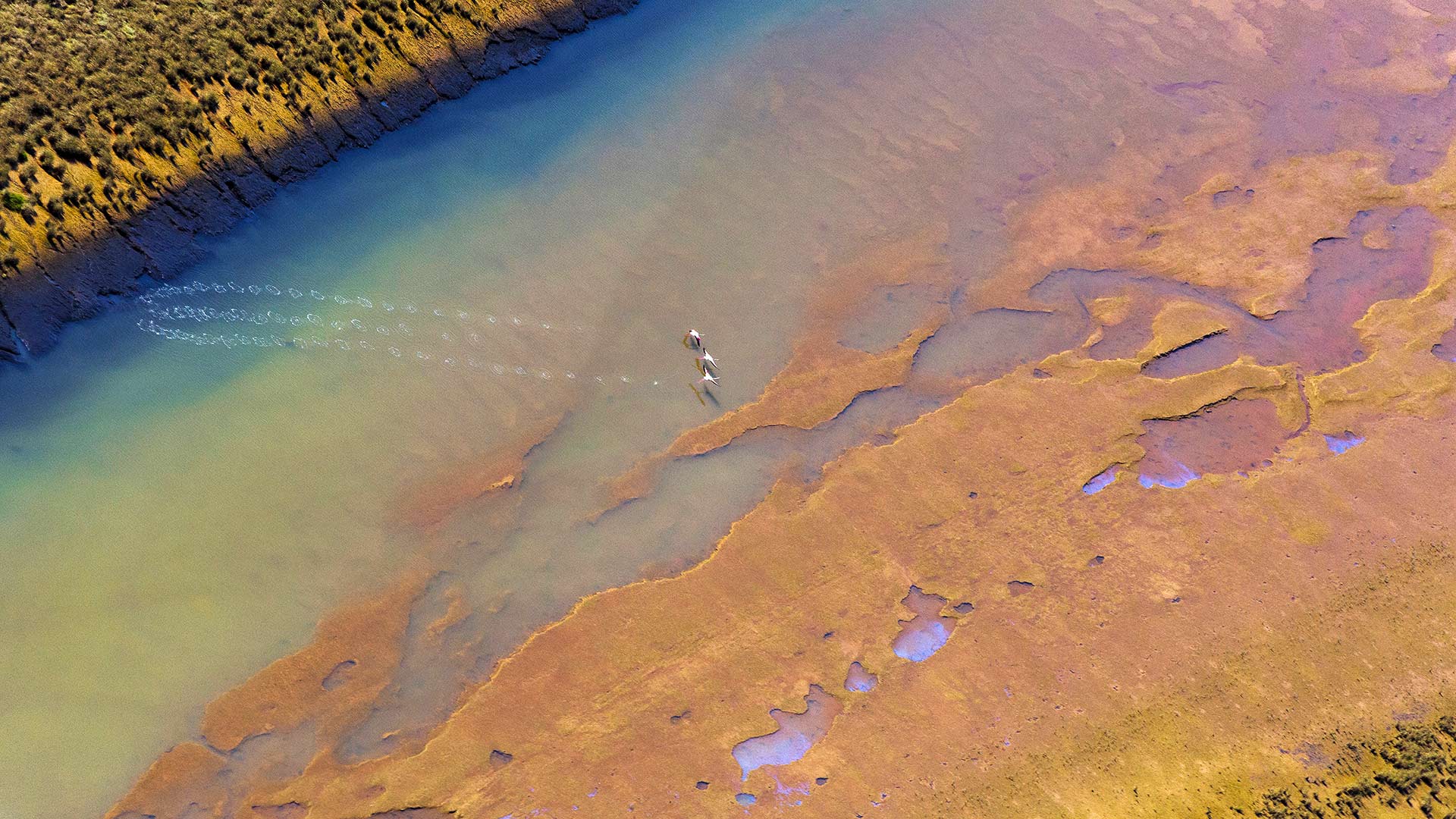阿卡迪亚国家公园的高丛蓝莓植物,缅因州 Highbush blueberry plants in Acadia National Park, Maine (© Danita Delimont/Gallo Images/Getty Images Plus)
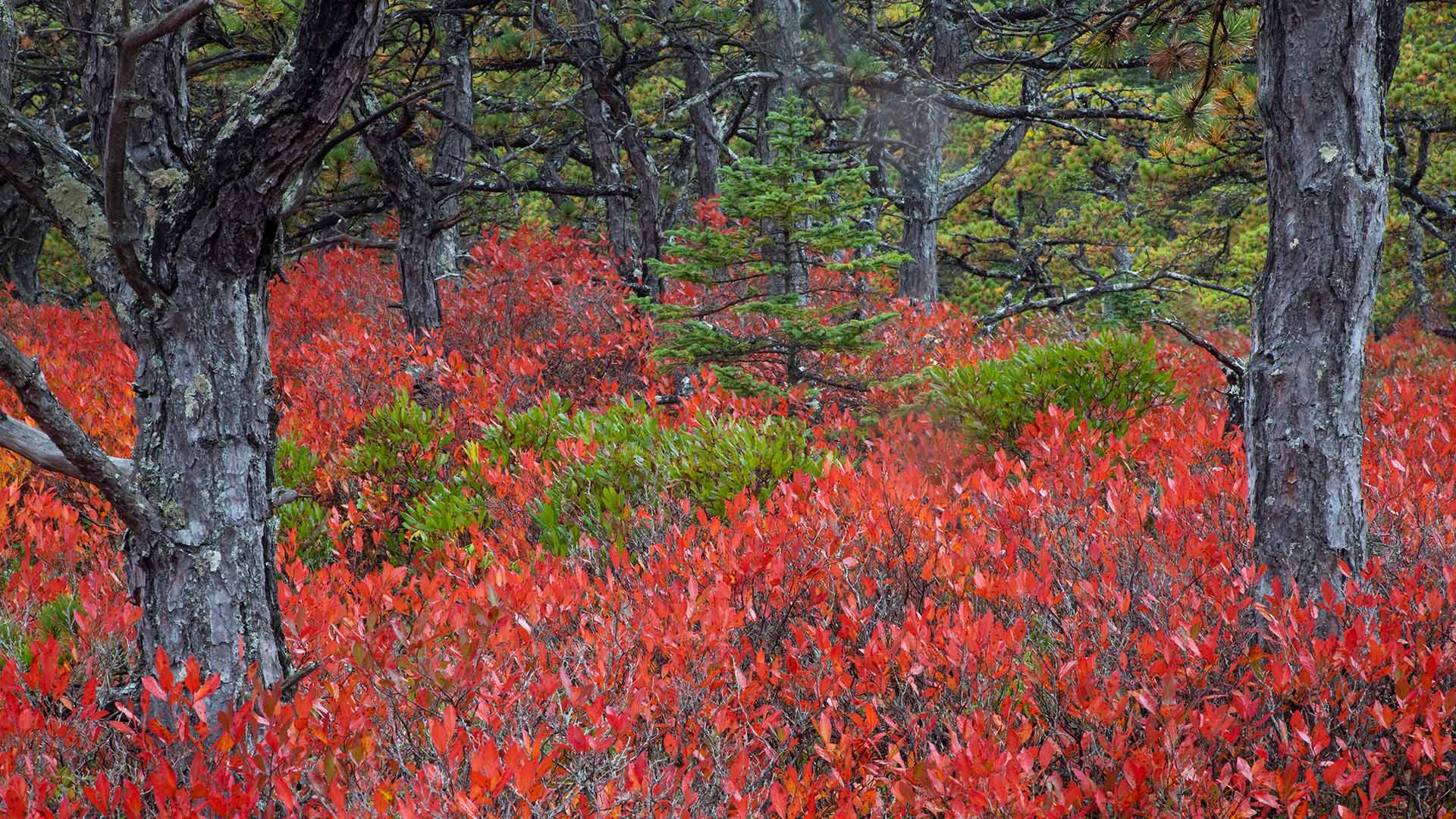
阿卡迪亚国家公园的高丛蓝莓植物,缅因州 Highbush blueberry plants in Acadia National Park, Maine (© Danita Delimont/Gallo Images/Getty Images Plus)
Acadia transformed
Historically, mid-October is peak fall foliage season in Maine's Acadia National Park. The forest canopy is aflame with autumn color, and here, the highbush blueberries on the forest floor provide an additional splash of color. Acadia has six marked coastal trails, and our photo today was taken on one of the most popular: Wonderland Trail. It's just 1.4 miles round-trip, an easy trek for families and casual hikers. Acadia is Maine's only national park, and it's easy to see why this landscape was preserved—look at that beautiful fall color, and that's just at ground level.
阿尔伯塔的日出,加拿大 Sunrise in Alberta, Canada (© Ambre Haller/Moment/Getty Images)
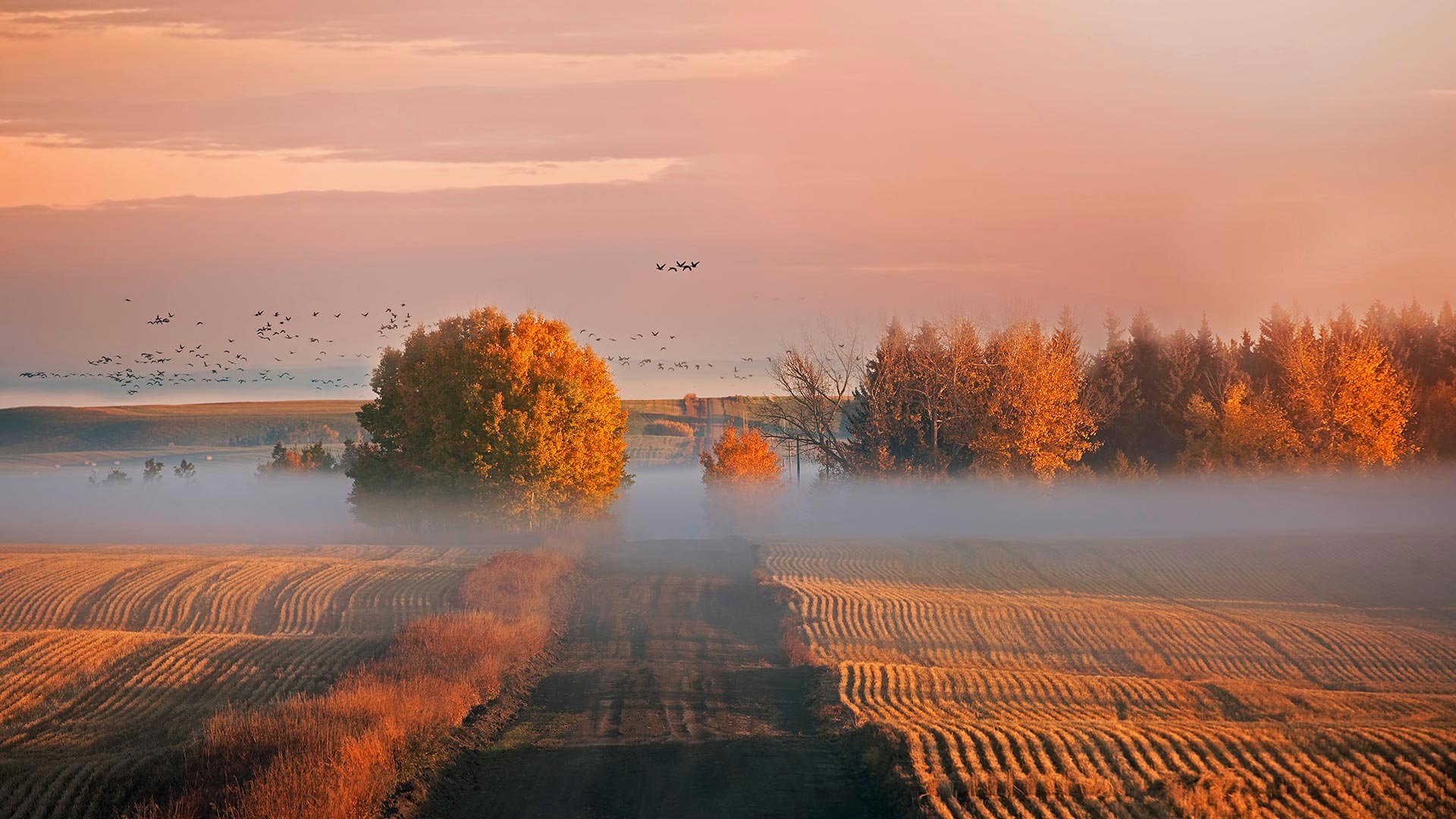
阿尔伯塔的日出,加拿大 Sunrise in Alberta, Canada (© Ambre Haller/Moment/Getty Images)
Canada gives thanks // Canadian Thanksgiving
We're looking at a fall sunrise in Alberta, Canada, in honor (or should we say 'honour’) of Canadian Thanksgiving. The holiday is officially celebrated on the second Monday in October, though many families gather the previous day. The first known Thanksgiving celebration in Canada was organized by English explorer Martin Frobisher in 1578 when he reached Newfoundland. Years later, American loyalists who were faithful to England during the Revolutionary War moved to Canada and brought traditions with them, such as eating turkey on Thanksgiving. A Canadian Thanksgiving table is also likely to have a cornucopia, a ram's horn (or horn-shaped basket) filled with festive-looking fruits and grains. Regional dishes might also include salmon and Nanaimo bars—a layered chocolate dessert.
Until this year, football was also part of the tradition, with the Canadian Football League hosting games every year from 1958 to 2018. For the 2019 season, however, no games were scheduled as the league considers some broader scheduling changes.
巴克拉纳帆船赛百舸争流,意大利的里雅斯特港 Boats massing for the Barcolana Regatta in the Gulf of Trieste, Italy (© Ababsolutum/E+/Getty Images)

巴克拉纳帆船赛百舸争流,意大利的里雅斯特港 Boats massing for the Barcolana Regatta in the Gulf of Trieste, Italy (© Ababsolutum/E+/Getty Images)
It's aboat time for the Barcolana
Today we're featuring an image of the Barcolana regatta, which is happening this weekend off the shore of Trieste, Italy. What makes this race so unusual—and so popular—is that it's open to both professional and amateur sailors. Its beginning was fairly inauspicious—in 1969 only 51 boats sailed in the inaugural race. But it's been drawing increasing numbers of sailors and spectators to Trieste each year. Last year, for the 50th anniversary of the Barcolana, 2,689 yachts raced the course and set the official record for largest sailing race in the world. With multiple events, including a youth sailing race, an open-water swimming race, a night sailing race, music concerts, food and wine tastings, and many others, both landlubbers and seadogs will find ways to enjoy themselves during the regatta.
拱门国家公园,犹他州莫阿布 Arches National Park, Moab, Utah (© Whit Richardson/Alamy Stock Photo)
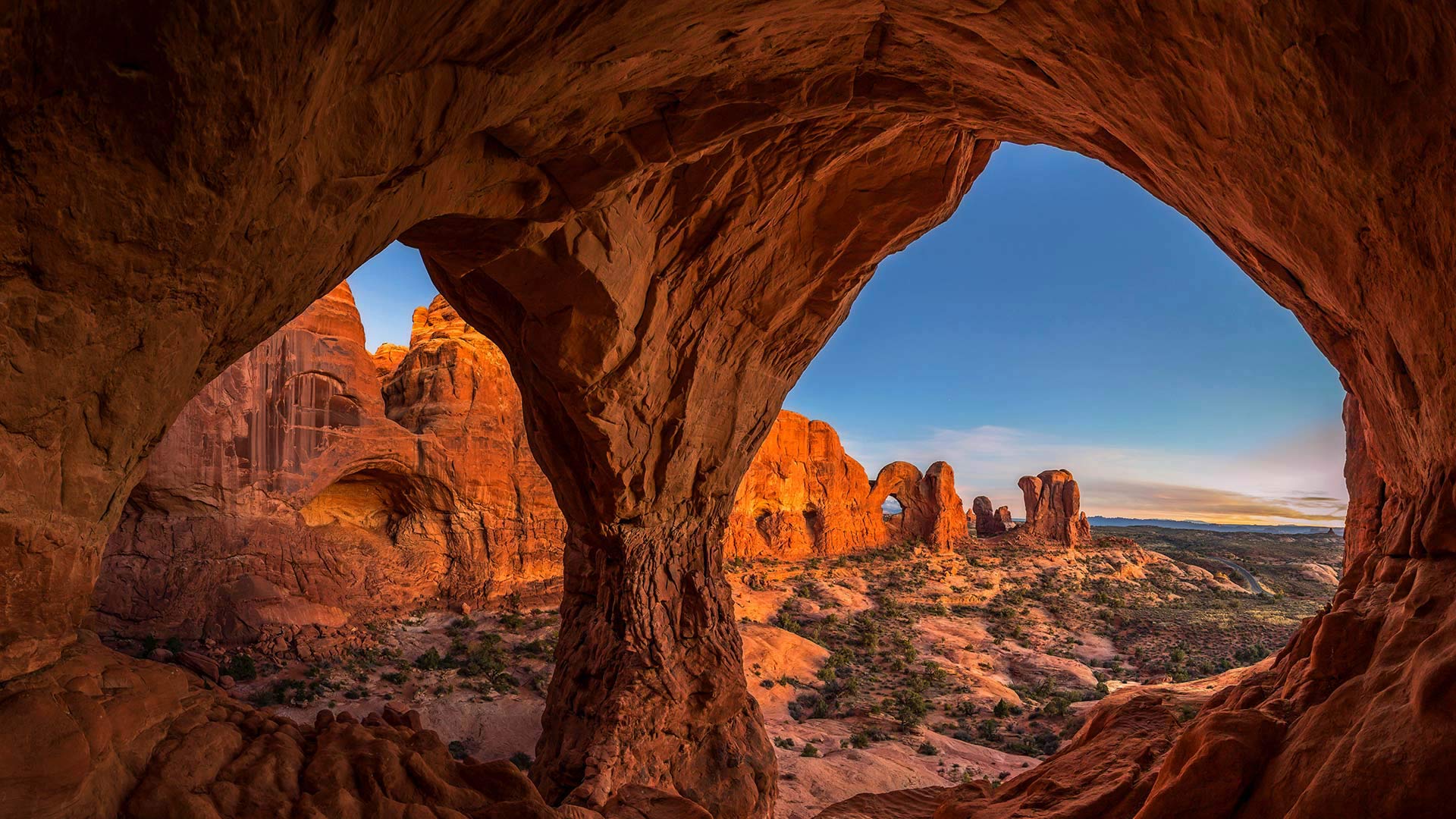
拱门国家公园,犹他州莫阿布 Arches National Park, Moab, Utah (© Whit Richardson/Alamy Stock Photo)
Art in the high desert
The desert doubles as an art studio this week at Arches National Park, as painters from all over congregate for the Red Rock Art Festival. This Moab-based event is a celebration of what the French call painting 'en plein air,' or painting outside. Sounds like a fabulous idea to us (and what a view!). The colorful landscape here at Arches National Park is home to the highest density of natural arches in the world—upwards of 2,000—as well as more pinnacles and dramatically balanced rocks. Combine that with the fiery sunsets, pinyon trees, and splashes of sage and yucca, and we’d say these artists are in for a treat. Lucky for them, October is a pleasant time to visit the harsh, desert landscape.
气泡星云 (NGC 7635) Bubble Nebula (NGC 7635) (© NASA, ESA, and the Hubble Heritage Team STScI/AURA)
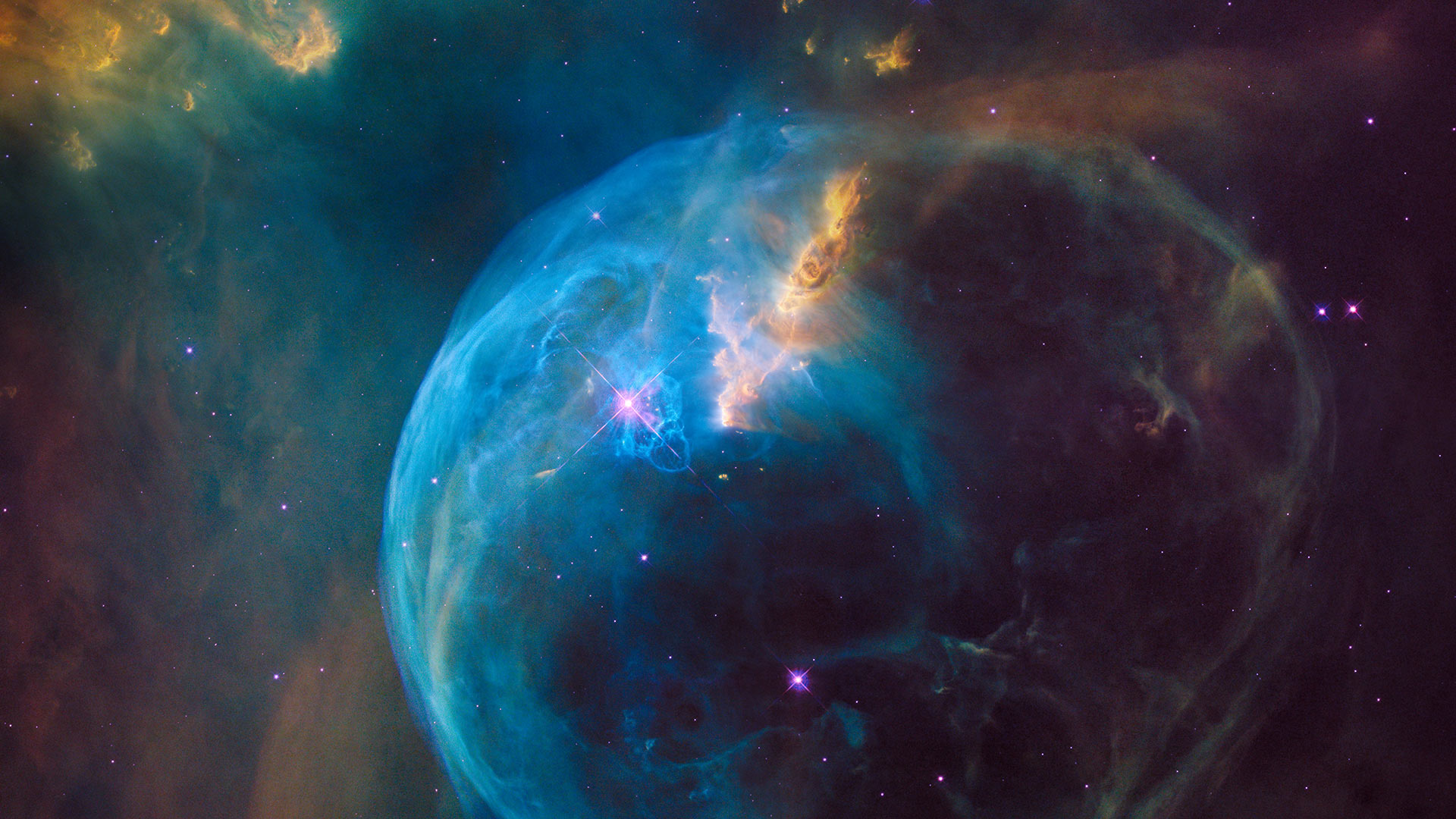
气泡星云 (NGC 7635) Bubble Nebula (NGC 7635) (© NASA, ESA, and the Hubble Heritage Team STScI/AURA)
A star blows a bubble
This giant space bubble is being blown by a massive star visible at the 10 o'clock position inside it. Already over 7 light-years across and expanding at a rate of over 4 million mph, the 'bubble' is actually the shock wave created when expanding hot gas (or stellar wind) hits the cold, interstellar gas that surrounds it. The Bubble nebula was discovered in 1787 by William Herschel. The star inside is living fast and will die young (for a star)—it will likely detonate as a supernova in only 10 to 20 million years. This image was taken in 2016 by the Hubble Space Telescope to mark the 26th anniversary of Hubble's launch into Earth orbit by the STS-31 space shuttle crew. We're showing it to mark the last day of World Space Week, an annual 'international celebration of science and technology, and their contribution to the betterment of the human condition.
莱奇沃思州立公园,纽约 Letchworth State Park, New York (© Jay O'Brien/Danita Delimont)
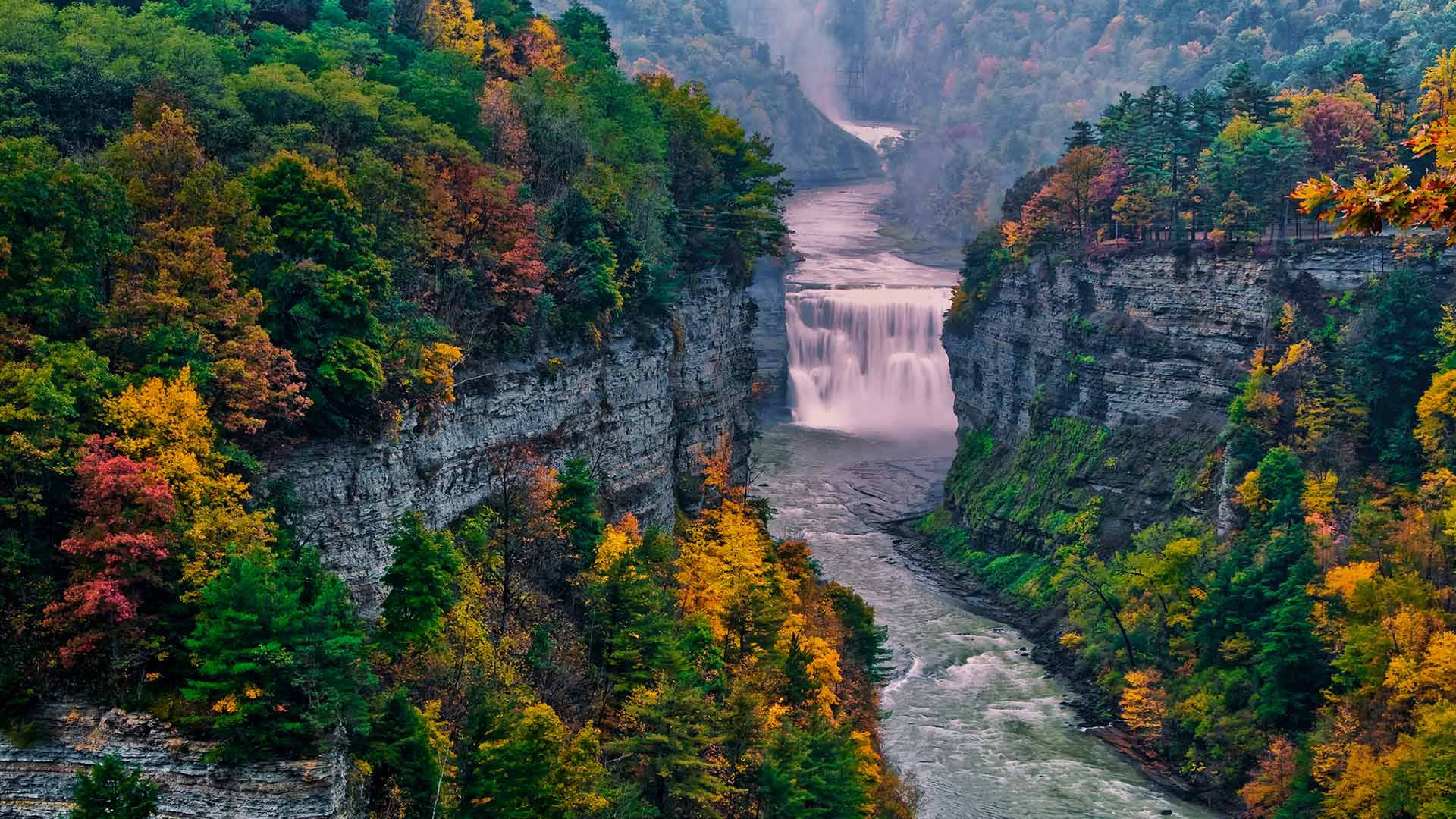
莱奇沃思州立公园,纽约 Letchworth State Park, New York (© Jay O'Brien/Danita Delimont)
'Grand Canyon of the East'
It's easy to see why Letchworth State Park in New York has earned this 'Grand' title. About 60 miles southeast of Buffalo, the 17-mile long park protects a stunning section of the Genesee River that cuts through a deep gorge. The cliffs, close to 600-feet high in some places, offer knockout views of several waterfalls and the thick deciduous forest. The historic Glen Iris Inn, once the home and refuge of industrialist William Pryor Letchworth, overlooks Middle Falls. In 1906, Letchworth bequeathed his 1,000-acre estate to the state of New York. The parcel would become the heart of this 14,427-acre park that bears his name.
Cleveland Clinic Lou Ruvo Center for Brain Health in Las Vegas, Nevada (© Garry Belinsky/Offset)
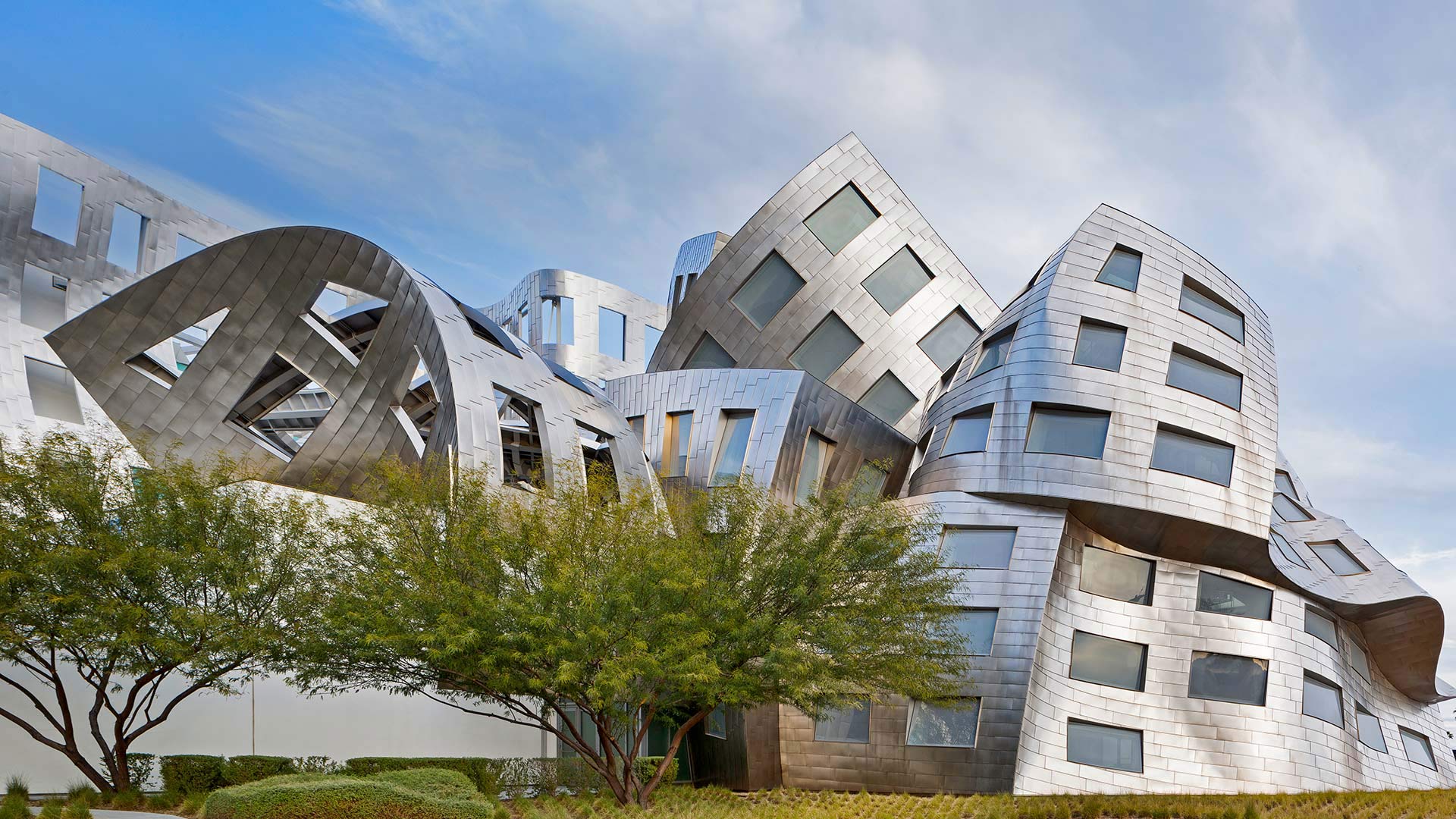
Cleveland Clinic Lou Ruvo Center for Brain Health in Las Vegas, Nevada (© Garry Belinsky/Offset)
From the mind of Frank Gehry
Today's image features the Cleveland Clinic Lou Ruvo Center for Brain Health in Las Vegas, designed by world-renowned architect Frank Gehry and his firm, Gehry Partners, in 2005. The building consists of three different elements: a medical building with spaces for patient care and research; the Life Activity Center, a for-hire event space which helps fund the center's research; and a breezeway connecting the two spaces. Some have likened these elements to the hemispheres of the brain itself, with the medical building representing rational thinking and the event space giving form to creative thinking.
Texas Star, the Ferris wheel at the State Fair of Texas in Dallas (© N. Hamp/Shutterstock)

Texas Star, the Ferris wheel at the State Fair of Texas in Dallas (© N. Hamp/Shutterstock)
A fair that's star-studded
Meet Texas Star, one of the tallest Ferris wheels in North America and a big attraction at the State Fair of Texas. Built in 1985, on a clear day it can be seen from Fort Worth, about 40 miles away. Since 1886, locals and visitors have come to Dallas' historic Fair Park for food, rides, shows, and other attractions. About 100,000 people a day now visit the fairgrounds to experience the array of activities and treats, from the largest new car show in the Southwest to a bevy of culinary delights. You can try deep-fried shepherd's pie, fried beer, or something called deep-fried skillet potato melt. Awards are given to the tastiest concoctions. But the fair's flavor extends beyond food. The purpose is to promote Texas agriculture, education, and community. There's plenty to do after exploring and sampling one-of-a-kind bites, including live music, pig races—and don't forget to ride the Texas Star.
韦尔瓦奥迪尔湿地起飞的三只大红鹳,西班牙安达卢西亚 (© Óscar Díez/Minden Pictures)
马尔堡峡湾鸟瞰图,新西兰 Aerial view of Marlborough Sounds, New Zealand (© Mathias Ortmann/Getty Images)
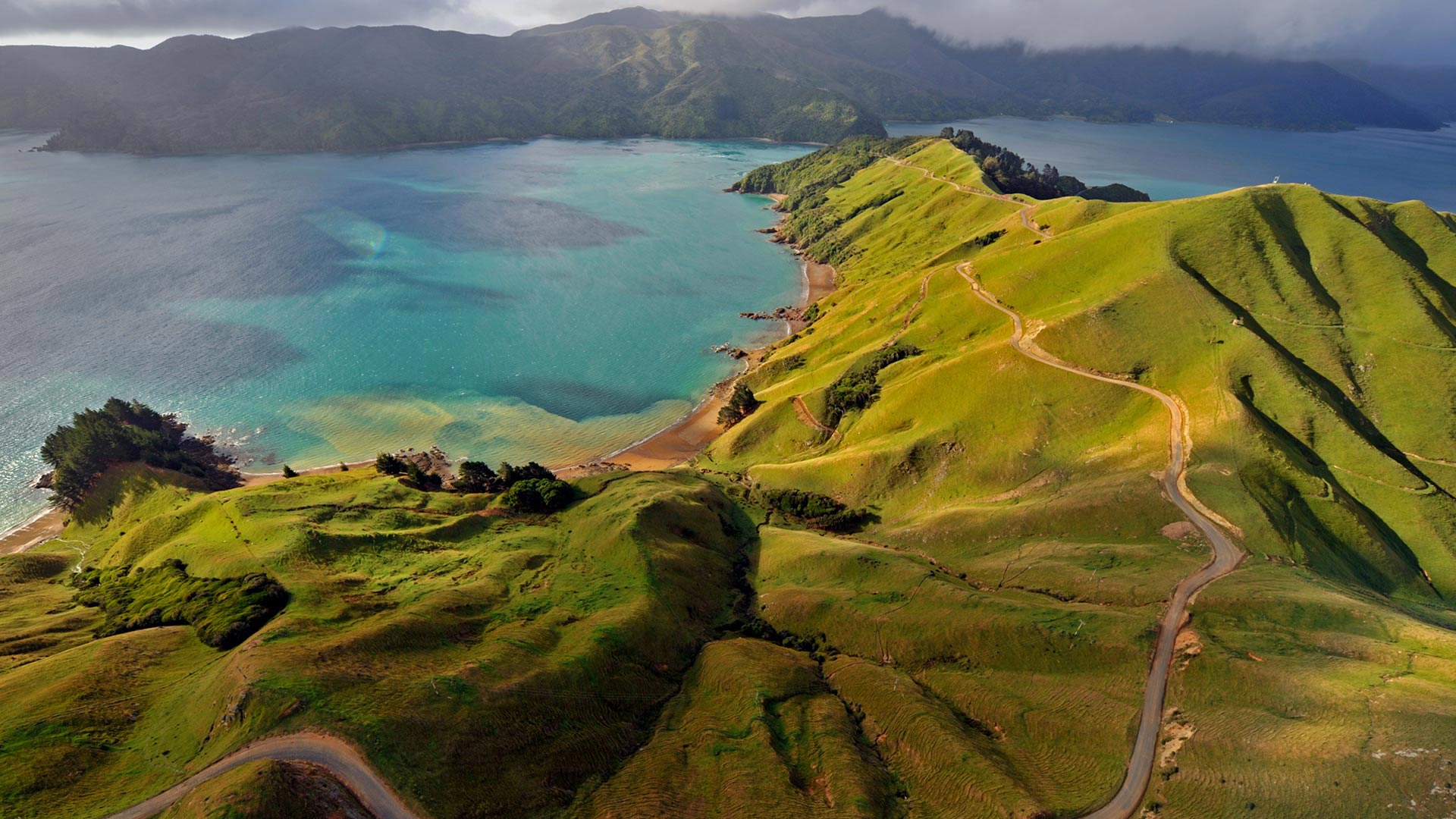
马尔堡峡湾鸟瞰图,新西兰 Aerial view of Marlborough Sounds, New Zealand (© Mathias Ortmann/Getty Images)
Land ho in New Zealand 250 years ago
We're looking at Marlborough Sounds, a network of ancient sunken river valleys located at the northern tip of New Zealand's South Island. But it was on the North Island, 250 years ago, that New Zealand was spotted by Captain James Cook from the HMS Endeavour. The main purpose of Cook's voyage to the Pacific was to sail to Tahiti and observe the transit of Venus across the face of the sun. Only after completing this task did Cook unseal the rest of his orders and learn he was to search the South Pacific for signs of a fabled great southern continent, Terra Australis Incognito. This was a hypothetical southern landmass that European Renaissance geographers thought must exist in order to counterbalance the Northern and Southern Hemispheres.
Of course, Cook never found Terra Australis, but with the help of a Tahitian named Tupaia, who had extensive knowledge of Pacific geography, and armed with the previous findings of explorer Abel Tasman from 1642, Cook sailed on to New Zealand. There, he and his crew built upon Tasman's work, becoming the first to circumnavigate and chart New Zealand's North and South Islands.
